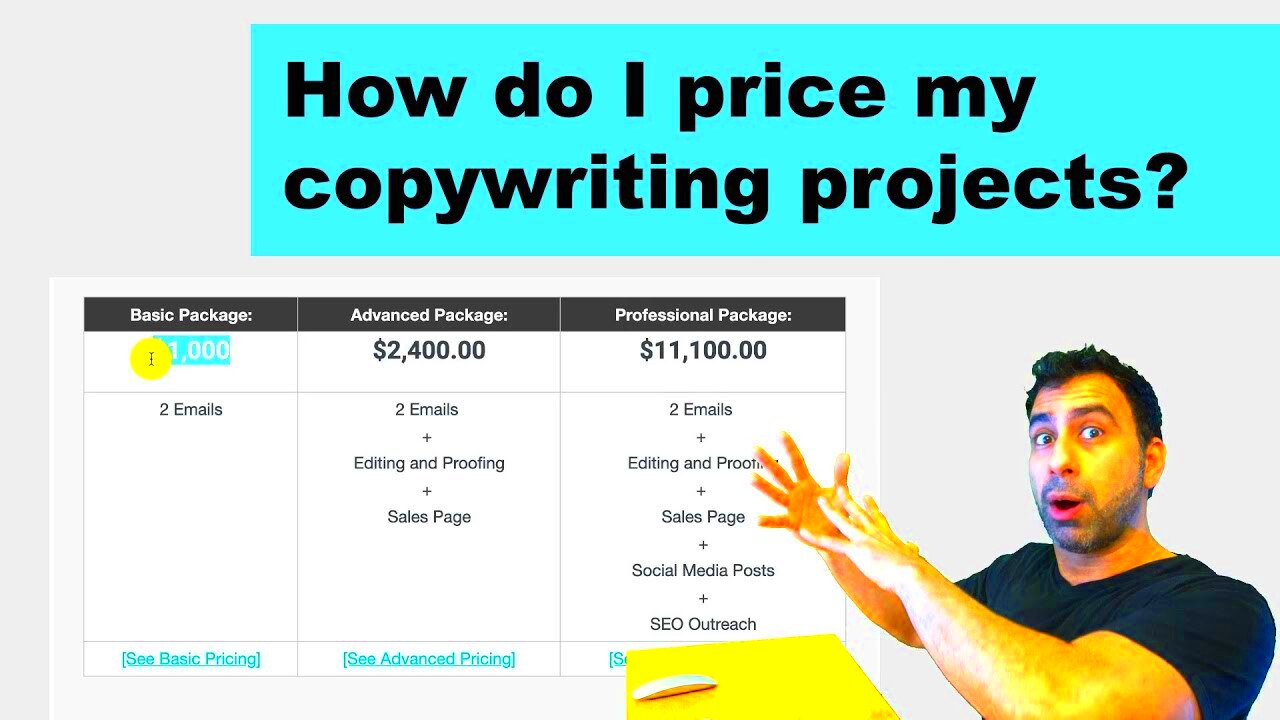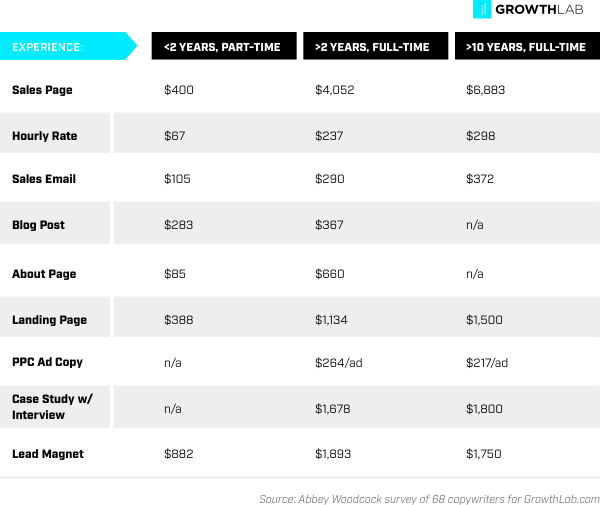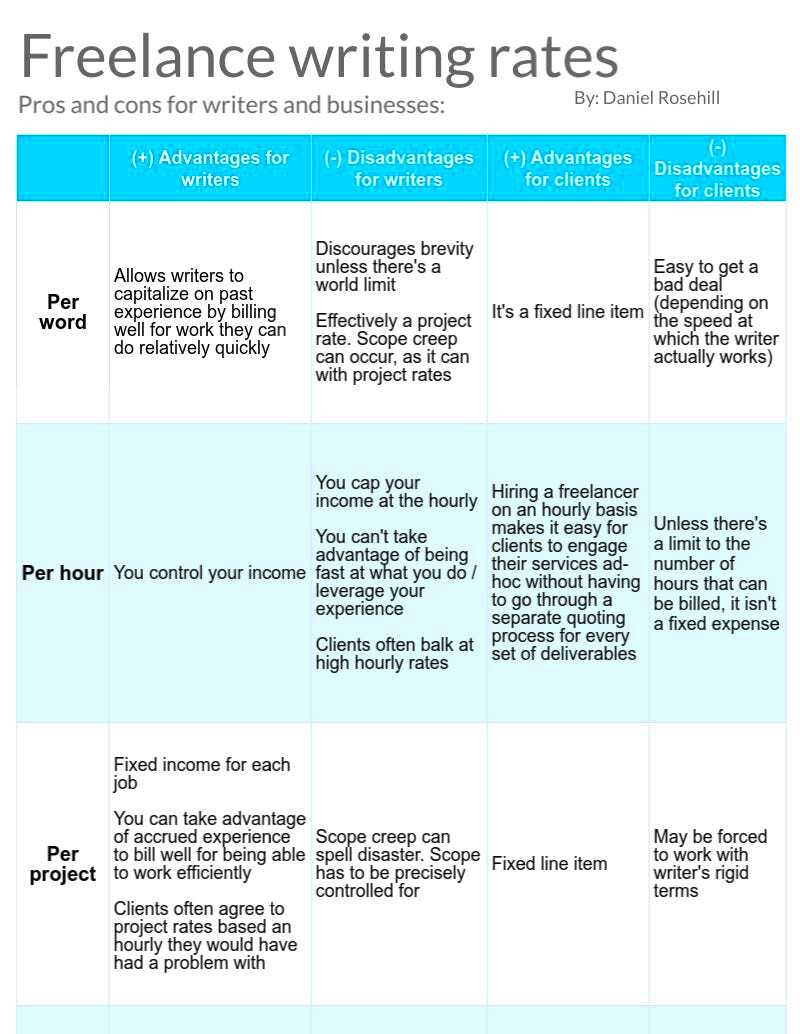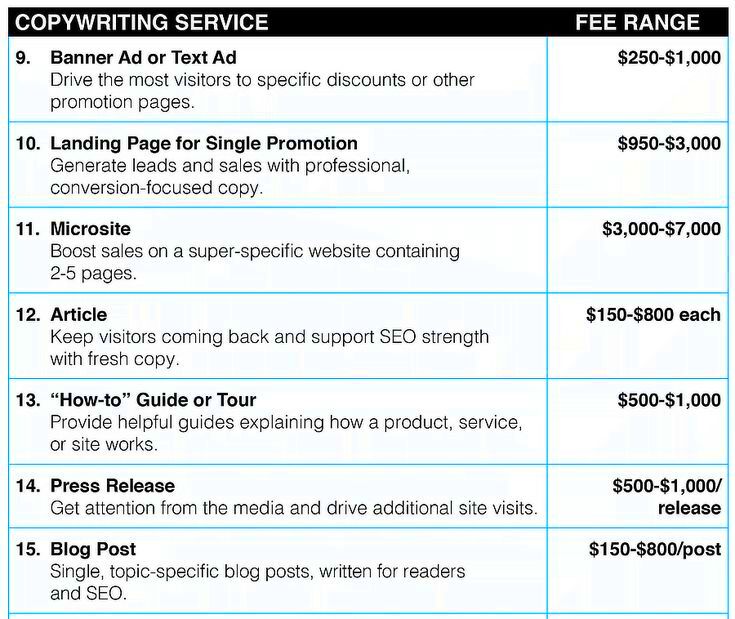When starting as a freelance copywriter, one of the biggest challenges you’ll face is determining how to price your services. Setting the right price is essential to attract clients while ensuring you’re fairly compensated for your time and skills. It can be tricky to strike the right balance, especially when you’re new to freelancing. In this guide, we’ll explore the key factors that influence copywriting rates, how to determine your value, and how to set competitive prices that align with your expertise.
Factors That Influence Freelance Copywriting Rates

Several factors play a role in determining the pricing for freelance copywriting projects. Understanding these elements will help you set rates that reflect your skills, experience, and the market demand. Here are the key factors to consider:
- Experience: More experienced copywriters can charge higher rates due to their established expertise and portfolio.
- Type of Project: The complexity and scope of the project, such as writing blog posts, web content, or product descriptions, can impact pricing.
- Client's Industry: Certain industries, like finance or technology, tend to pay more for specialized copywriting.
- Deadline: Tight deadlines may justify higher rates, as they require more time and effort.
- Geographical Location: The market demand and living costs in your location can influence your pricing strategy.
It’s important to assess these factors to ensure your rates reflect the effort, skill, and time required for each project.
Also Read This: Getting Started as a Freelance Administrative Assistant
Understanding Different Types of Copywriting Projects

Copywriting isn’t a one-size-fits-all service. Different types of projects require different levels of expertise and effort, which in turn affects pricing. Let’s break down the most common types of copywriting projects:
| Type of Project | Typical Rate | Project Complexity |
|---|---|---|
| Blog Posts | $50 - $500 | Medium |
| Website Copy | $150 - $2,000 | High |
| Product Descriptions | $10 - $100 per item | Low to Medium |
| Press Releases | $200 - $1,000 | High |
| Email Campaigns | $100 - $1,500 | Medium |
Each of these projects requires a different level of research, creativity, and time. For instance, writing a website’s homepage or a landing page usually demands a deeper understanding of SEO and audience psychology, which could lead to higher rates. In contrast, writing short product descriptions might have a lower price tag but requires speed and precision.
It’s important to factor in the complexity of each project when deciding your rate. Understanding the different types will help you tailor your prices accordingly.
Also Read This: Top 10 Product Description Translators on Fiverr
How to Set a Competitive Price for Your Copywriting Services

Setting a competitive price for your copywriting services can feel daunting, especially with so many other freelancers offering similar services. However, it’s essential to find a price that not only attracts clients but also reflects your skill level and ensures you’re compensated fairly. Here are some tips to help you determine a competitive price:
- Research Your Competition: Look at what other freelance copywriters in your niche are charging. This will give you a ballpark idea of the going rates, but remember, you can always adjust based on your experience and expertise.
- Factor in Your Experience: If you’re just starting out, your rates might be on the lower side to build a portfolio. However, as you gain experience, you can gradually increase your prices.
- Consider Your Skillset: If you have specialized skills in a high-demand niche, such as SEO or technical writing, you can charge higher rates due to your expertise.
- Understand the Scope of the Project: Assess how much time and effort the project will require. If it’s a high-effort task, such as writing long-form content or creating complex copy, your price should reflect that.
- Value Your Time: Don’t forget to account for the time you spend on research, communication with clients, and revisions when setting your price.
By doing thorough research and adjusting your rates based on your unique situation, you’ll be able to set a competitive price that aligns with the value you provide.
Also Read This: Top 10 Financial Reports Translators on Fiverr
Pricing Strategies for Freelance Copywriting Projects
As a freelance copywriter, choosing the right pricing strategy is crucial to maintaining a steady income and growing your business. The way you charge can affect how clients perceive your work and your ability to attract high-paying projects. Let’s explore a few common pricing strategies:
- Hourly Rate: Charging by the hour is a straightforward method. It works well for smaller tasks where the scope isn’t clear or when you’re working with new clients. However, keep in mind that hourly rates may not always reflect the full value of your work.
- Per Word Rate: Charging per word is a popular option for projects like blog posts or articles. This method is great because it’s easy to estimate how much you’ll earn based on word count. For example, if you charge $0.10 per word and write a 500-word article, you’ll earn $50 for that project.
- Per Project Rate: For larger projects, a fixed price can be more beneficial. Clients know exactly what they’ll pay, and you’re rewarded for your efficiency. A project-based rate is particularly effective for website copy, email campaigns, or complete content packages.
- Retainer Model: A retainer model works well for clients who need consistent copywriting. You agree on a fixed monthly fee in exchange for a set number of hours or projects. This is a great way to secure steady income and build long-term relationships with clients.
- Value-Based Pricing: In this model, you set prices based on the value your copywriting brings to the client’s business. If your work leads to increased sales or conversions, you can charge a higher fee based on the outcome.
By choosing the right strategy for each project, you can optimize your pricing and ensure you're getting paid fairly for your work.
Also Read This: The Easiest Way to Get Your First Order on Fiverr
Common Mistakes to Avoid When Setting Copywriting Prices
Setting your copywriting prices correctly is crucial for maintaining a successful freelance business. However, many new freelancers make mistakes when determining their rates, which can lead to undervaluing their services or losing potential clients. Here are some common mistakes to avoid:
- Undervaluing Your Services: One of the biggest mistakes freelancers make is undervaluing their skills. You might feel tempted to set low rates to attract clients, but this can harm your business in the long run. Clients may view cheap prices as a sign of low-quality work.
- Not Considering Your Time: It’s easy to focus on the client's budget and forget to account for the time it takes to complete the project. Make sure to factor in research, revisions, and communication time into your rates.
- Ignoring the Scope of the Project: Charging the same rate for different types of work can lead to problems. A simple blog post should not cost the same as a detailed website copy project. Always assess the scope before settling on a price.
- Not Reviewing Your Rates Regularly: As your experience and portfolio grow, so should your rates. Regularly evaluate your pricing to ensure that you’re keeping up with industry standards and reflecting your increased skills and expertise.
- Being Afraid to Raise Rates: Many freelancers fear raising their prices because they worry clients will leave. However, if you offer quality work, clients will understand your need to adjust rates. Don't be afraid to ask for what you’re worth.
- Not Having a Contract: Even if you’re working with a trusted client, it’s essential to have a contract in place that outlines the project details, payment terms, and deadlines. This helps avoid misunderstandings and ensures you're paid for your work.
Avoiding these common mistakes will help you set fair and competitive rates that align with your skills and the value you provide to clients.
Also Read This: The Best Description Samples for A Logo Designer Gig on Fiverr
How to Adjust Your Rates Based on Experience and Demand
As a freelance copywriter, your rates should evolve as you gain experience and the demand for your services changes. Setting rates based on experience and market demand ensures you’re always charging a fair price for your work. Let’s look at some ways you can adjust your rates:
- Increase Your Rates Gradually: As you gain experience and build a strong portfolio, don’t be afraid to raise your rates. Clients expect seasoned professionals to charge higher prices. Start by adjusting your rates slightly and see how clients respond.
- Specialize in a Niche: Specializing in a high-demand niche, such as healthcare, technology, or finance, allows you to charge premium rates. Clients in specialized industries are willing to pay more for a copywriter who understands their field.
- Track Market Demand: If there’s a high demand for copywriting services in your area or industry, you can raise your prices to reflect this. Keep an eye on trends and adjust your rates accordingly. For example, if SEO copywriting is in demand, you might be able to charge more for SEO-focused content.
- Consider Client Size: Larger companies often have bigger budgets for marketing and copywriting services. If you're working with bigger clients or more prominent brands, you can charge higher rates for the same services.
- Account for Inflation and Cost of Living: Over time, the cost of living increases, and inflation affects pricing across the economy. Ensure your rates keep pace with these changes to maintain profitability.
By regularly evaluating your rates based on your experience and the demand for your services, you ensure that you are always charging what your work is worth and staying competitive in the market.
Also Read This: How to Post a Buyer Request on Fiverr
Conclusion
Pricing your freelance copywriting services can be a tricky task, but with the right strategies, you can find a pricing structure that works for you and your clients. The key is to understand the factors that influence your rates, like your experience, the type of work, and market demand. Be sure to adjust your rates as you grow professionally and as demand for your services shifts.
Remember, your pricing should reflect the value you bring to clients, and it’s okay to raise your rates as you become more experienced and specialized. Consistently offering high-quality work and building strong client relationships will ensure that your business thrives.
Frequently Asked Questions
Q1: How do I know if my rates are too high or too low?
A1: Researching your competition is a good place to start. Look at what other copywriters in your niche are charging and compare their experience to yours. If your rates are significantly higher or lower than the average, consider adjusting based on your skill level, the project scope, and the client’s budget.
Q2: Should I charge hourly or per project?
A2: It depends on the project. If the scope is clear and the work is repetitive, charging per project might be more efficient. For ongoing tasks or unclear projects, an hourly rate might be better. Consider what works best for your workflow and the client’s needs.
Q3: How often should I raise my rates?
A3: It’s a good idea to review your rates every 6-12 months. If you’ve gained experience, acquired new skills, or if the market demand for your services has increased, it’s time to adjust your rates. Just make sure to communicate any rate increases clearly with your clients.
Q4: What if a client can’t afford my rates?
A4: If a potential client can’t afford your rates, consider offering them a smaller package or referring them to another freelancer. It’s important to maintain your pricing structure and not undervalue your services, but you can offer alternatives to keep the client satisfied.
Q5: How can I attract clients who are willing to pay higher rates?
A5: Focus on building a strong portfolio, specializing in a niche, and improving your skills. The more specialized and experienced you are, the more likely you’ll attract higher-paying clients. Networking, testimonials, and consistent marketing can also help you land higher-paying projects.




